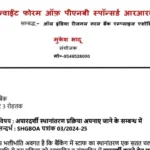The government is planning to introduce a new system called the Labour Welfare and Employment Index (LWEI) to rank states and Union territories in India. This index will assess different factors like employment opportunities, welfare programs for workers, social security coverage, and productivity. The goal of this initiative is to encourage healthy competition between states and make it easier for businesses to operate. The government hopes that by ranking states based on the LWEI, it will push them to focus on areas where labor laws are lacking or inadequate. This will result in more consistent employment policies and benefits, particularly for businesses that operate in multiple states.
The Ministry of Labour is expected to launch the LWEI in the coming weeks after consulting with state governments, NITI Aayog (the government’s policy think tank), the International Labour Organization (ILO), and other relevant ministries. The Finance Minister, Nirmala Sitharaman, might announce this initiative during her Budget speech next month. The LWEI aims to promote uniformity in the implementation of labor laws across states, ultimately improving labor welfare. This index is designed to make states more competitive and responsive to the changing employment and labor requirements. It will directly benefit workers by enhancing transparency and business operations.
The LWEI is similar to the Labour Rights Index, which is a tool used to evaluate labor legislation in 135 countries. The Labour Rights Index provides information and insights to workers, helping them improve their working conditions.
According to a recent study by the VV Giri National Labour Institute, currently, 24 states and Union territories have established rules under all four labor codes. However, West Bengal, Meghalaya, Nagaland, Lakshadweep, and Dadra & Nagar Haveli have yet to formulate rules under any of the codes. The study also highlighted significant differences in the rules established by different states and Union territories, indicating that some regulations contradict the basic principles and objectives of the new labor codes.
To address this, the government conducted a review meeting with officials from state labor departments, urging them to expedite the process of formulating rules under the new labor codes. Implementing these codes remains a top priority for the government. The meeting discussed the rules formulated by states and emphasized the need for uniformity to ensure that the effort put into enacting new codes is not in vain. Representatives from all states agreed on this proposition.
The LWEI aims to standardize labor welfare practices across the country, creating a more equitable and efficient labor market that benefits both workers and businesses.

